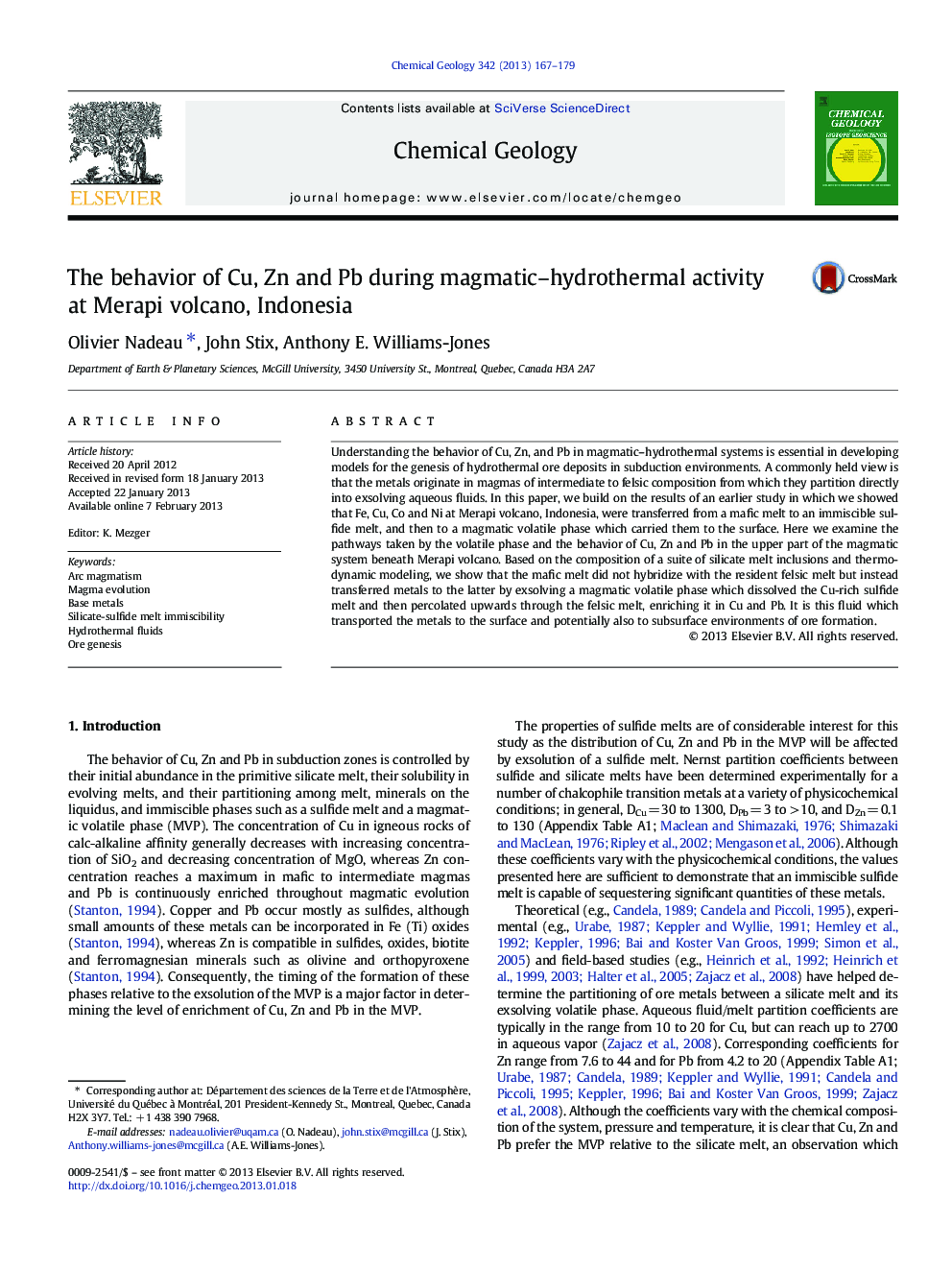| Article ID | Journal | Published Year | Pages | File Type |
|---|---|---|---|---|
| 4699078 | Chemical Geology | 2013 | 13 Pages |
Understanding the behavior of Cu, Zn, and Pb in magmatic–hydrothermal systems is essential in developing models for the genesis of hydrothermal ore deposits in subduction environments. A commonly held view is that the metals originate in magmas of intermediate to felsic composition from which they partition directly into exsolving aqueous fluids. In this paper, we build on the results of an earlier study in which we showed that Fe, Cu, Co and Ni at Merapi volcano, Indonesia, were transferred from a mafic melt to an immiscible sulfide melt, and then to a magmatic volatile phase which carried them to the surface. Here we examine the pathways taken by the volatile phase and the behavior of Cu, Zn and Pb in the upper part of the magmatic system beneath Merapi volcano. Based on the composition of a suite of silicate melt inclusions and thermodynamic modeling, we show that the mafic melt did not hybridize with the resident felsic melt but instead transferred metals to the latter by exsolving a magmatic volatile phase which dissolved the Cu-rich sulfide melt and then percolated upwards through the felsic melt, enriching it in Cu and Pb. It is this fluid which transported the metals to the surface and potentially also to subsurface environments of ore formation.
► We analyzed major elements and metals in silicate melt inclusions from Merapi's lavas and scorias. ► We modeled assimilation and fractional crystallization (AFC) of Merapi deep mafic and shallow felsic melts. ► AFC cannot account for the atypical enrichment of Cu and Pb in Merapi shallow melt. ► We thus proposed a new model to explain how this enrichment occurred. ► In this model, a hydrothermal fluid percolated upward and partitioned its Cu and Pb into the shallow magma.
